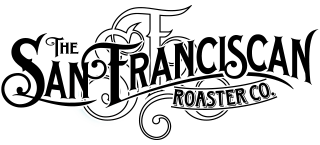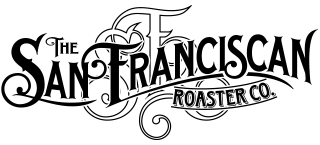
When considering lower-cost commercial coffee roasters, you might get the impression that a reputable U.S. company, passionate about the coffee industry, has shifted its manufacturing to China -- solely to offer a more budget-friendly product to its customers.
It all sounds feasible and fair — But a visit to the Chinese trading platform, Alibaba tells a different story.
Take a tour through the site, and you’ll find countless manufacturers, each offering machines that look nearly identical—sleek stainless steel exteriors, polished finishes, and enticingly low price tags.
It quickly becomes apparent that with just a few clicks, any US company can slap its brand on these mass-produced roasters and start selling them. And behind the shiny facade lies a troubling reality about the quality, performance, and longevity of these machines.
The Cookie-Cutter Manufacturing Process
There is a reason that nearly every machine looks the same on Alibaba, regardless of which factory it comes from. It’s because these machines are built using standardized parts, produced en masse with the primary goal of reducing costs. Customization options are often limited to the exterior—colors, logos, and branding—while the internal mechanics remain generic and unimpressive.
For a brand looking to enter the coffee roasting business, the allure is clear: it’s cheap, fast, and requires no technical expertise.
But what happens when these roasters hit the market? More importantly, what sort of the coffee do they produce?
Disastrous Results in the Roasting Chamber
Chinese roasting machines look slick and efficient, but once you start roasting with them, the flaws become glaringly obvious. Coffee roasting is a delicate process that requires precise control over temperature, airflow, and timing to produce the nuanced flavors that distinguish a high-quality roast from a mediocre one. Unfortunately, many of the roasters flooding the market from Chinese manufacturers fail to deliver on these fronts.
- Inconsistent Heat Distribution: One of the most common complaints about mass-produced roasters is their inability to distribute heat evenly. Hot spots in the roasting chamber can lead to burnt or unevenly roasted beans, resulting in batches that are either overdone or undercooked. For coffee professionals striving for consistency, these machines quickly become a liability rather than an asset.
- Poor Build Quality: While the exteriors of these machines look robust, the internal components often tell a different story. These roasters are built using cheap materials, which can lead to frequent breakdowns, malfunctions, and costly repairs. The parts that matter most—bearing, heating elements, fans, and control systems—are often under-engineered, leading to a short lifespan. It’s not uncommon for these machines to wear out after just a few years of moderate use.
- Lack of Precision Control: For serious coffee roasters, the ability to control every aspect of the roast is paramount. Many of the roasters produced in China offer minimal control over crucial variables, such as drum speed, temperature profiling, and air circulation. This lack of precision results in a process that’s more guesswork than science, making it nearly impossible to replicate successful roasts consistently.
A Lack of Support and Customer Service
Another major issue facing U.S. companies that rely on mass-produced coffee roasters from China is the near-total absence of after-sales support. Once the machine is shipped and delivered, you’re largely on your own. Need help troubleshooting a technical issue? Good luck finding reliable customer service or spare parts in the U.S.
Chinese manufacturers are optimized for mass production and low costs, but they often fall short in terms of customer care. Many U.S. brands that white-label these roasters are left scrambling to provide support themselves, often with little to no technical knowledge of how the machines are built or how to fix them when they break down. This leaves business owners—many of whom are new to coffee roasting—struggling with malfunctioning equipment and no clear path to getting it up and running again.
For small business owners trying to build a reputation in the competitive world of specialty coffee, these kinds of setbacks can be disastrous. A roaster that goes down for days or even weeks due to technical issues can disrupt production schedules, delay orders, and tarnish a brand’s reputation among its customers.
Short Lifespans and Long-Term Costs
While these Chinese-made roasters may seem like a cost-effective choice upfront, their lack of durability often turns them into a money pit in the long run. As components wear out and machines break down, the costs of repairs and replacements quickly add up. Many businesses find themselves needing to purchase new roasters just a few years after their initial investment, negating the perceived savings of buying a cheaper machine in the first place.
In contrast, higher-end machines like San Franciscan Roasters are built to last for decades, with a focus on quality craftsmanship and superior materials. While they come with a higher price tag, these machines offer better performance, longer lifespans, and, most importantly, consistent results that build customer trust and loyalty.
The Deceptive Appeal of White-Labeling
For U.S. companies looking to get into the coffee roaster market quickly and cheaply, white-labeling Chinese-manufactured roasters might seem like an attractive option. But as the saying goes, "you get what you pay for." Many of these brands fail to consider the long-term implications of selling poorly constructed machines under their own name.
Not only do these roasters often fail to meet the quality standards expected by professional roasters, but they can also lead to a host of reputational issues for the companies selling them. If customers repeatedly encounter problems with their equipment—whether it's uneven roasts, frequent breakdowns, or a lack of support—they’ll eventually take their business elsewhere. In an industry where quality and consistency are paramount, cutting corners on equipment can do more harm than good.
The Real Cost of Cheap Roasters
A quick tour through Alibaba may make it seem like launching a coffee roaster brand is a simple task. With a few clicks, you can source a sleek, stainless steel machine and start selling it under your own name. But as with many things, the reality is much more complex—and much more costly.
The truth is, mass-produced coffee roasters from China often fail to live up to the standards required by serious coffee professionals. With inconsistent performance, poor build quality, and a lack of support, these machines can do more harm than good for businesses looking to make their mark in the specialty coffee world.
For those who truly care about the craft of coffee roasting, investing in a high-quality coffee roasting machine is the only way forward. Brands that prioritize quality, craftsmanship, and long-term performance will ultimately stand the test of time, while those that rely on cheap, mass-produced roasters will find themselves facing costly repairs, unhappy customers, and a reputation that’s difficult to recover from.


